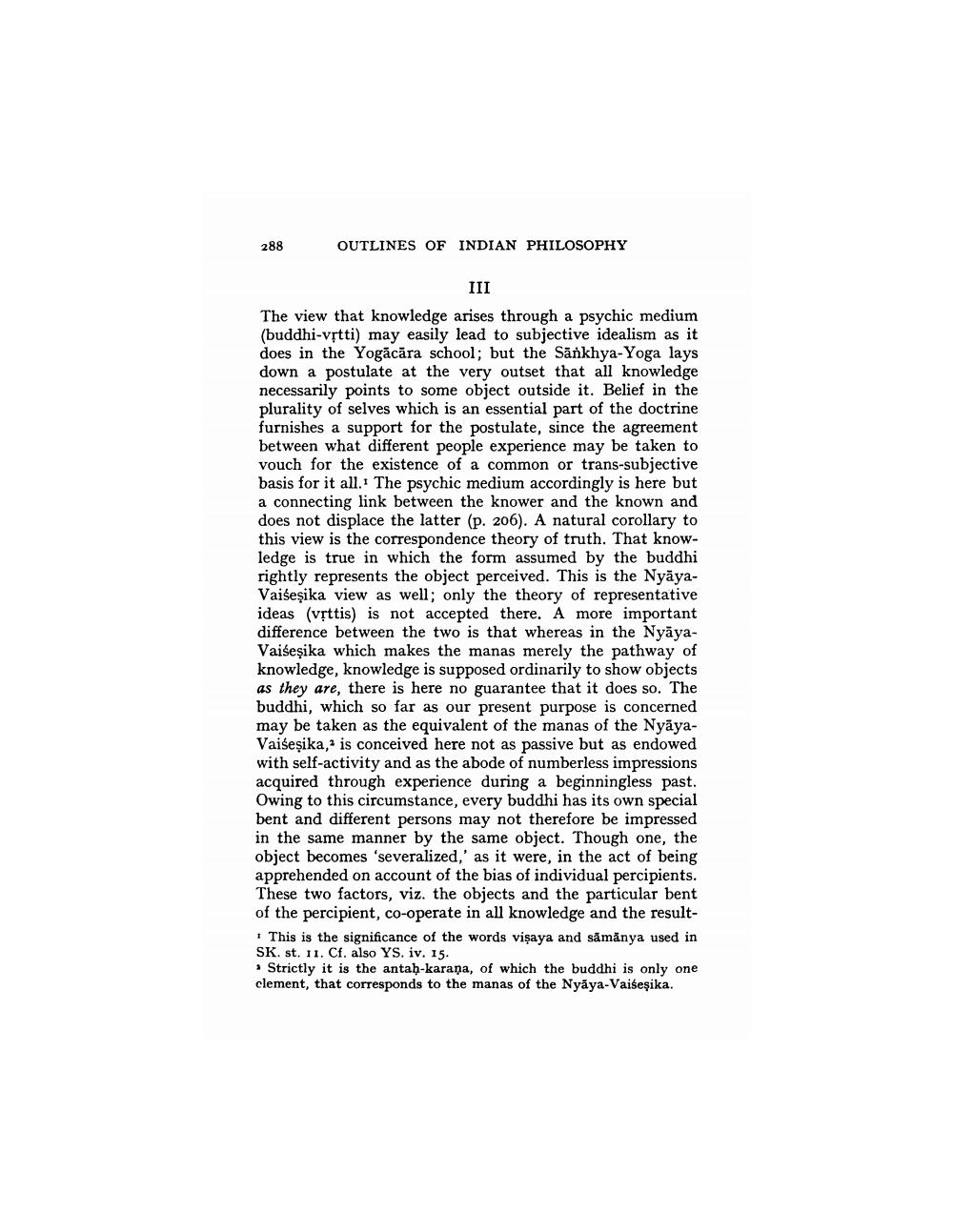________________
288
OUTLINES OF INDIAN PHILOSOPHY
III
The view that knowledge arises through a psychic medium (buddhi-vrtti) may easily lead to subjective idealism as it does in the Yogācāra school; but the Sankhya-Yoga lays down a postulate at the very outset that all knowledge necessarily points to some object outside it. Belief in the plurality of selves which is an essential part of the doctrine furnishes a support for the postulate, since the agreement between what different people experience may be taken to vouch for the existence of a common or trans-subjective basis for it all. The psychic medium accordingly is here but a connecting link between the knower and the known and does not displace the latter (p. 206). A natural corollary to this view is the correspondence theory of truth. That knowledge is true in which the form assumed by the buddhi rightly represents the object perceived. This is the NyayaVaišesika view as well; only the theory of representative ideas (vșttis) is not accepted there. A more important difference between the two is that whereas in the NyāyaVaisesika which makes the manas merely the pathway of knowledge, knowledge is supposed ordinarily to show objects as they are, there is here no guarantee that it does so. The buddhi, which so far as our present purpose is concerned may be taken as the equivalent of the manas of the NyāyaVaišeşika, is conceived here not as passive but as endowed with self-activity and as the abode of numberless impressions acquired through experience during a beginningless past. Owing to this circumstance, every buddhi has its own special bent and different persons may not therefore be impressed in the same manner by the same object. Though one, the object becomes 'severalized,' as it were, in the act of being apprehended on account of the bias of individual percipients. These two factors, viz. the objects and the particular bent of the percipient, co-operate in all knowledge and the result
This is the significance of the words visaya and sämänya used in SK. st. 11. Cf. also YS. iv. 15. • Strictly it is the antah-karana, of which the buddhi is only one clement, that corresponds to the manas of the Nyāya-Vaiseşika.




